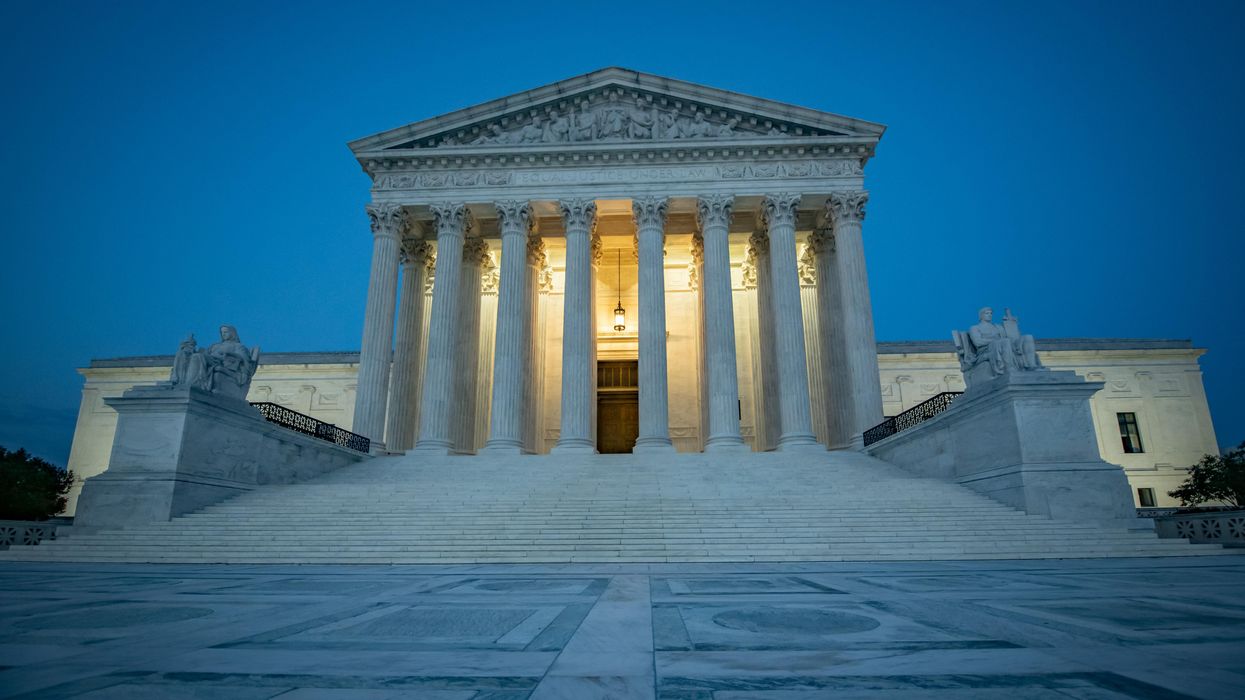Goldstone’s most recent book is "On Account of Race: The Supreme Court, White Supremacy, and the Ravaging of African American Voting Rights.
On Sept. 17, Constitution Day, The Washington Post published “ One way to repair the Supreme Court,” an editorial in which it decried the court’s loss of legitimacy and suggested implementing term limits for justices, perhaps 18 years, and staggering the terms so no president could contrive a disproportionate number of appointees. On its own, this move would take decades to have any impact, long after the present court had caused irreparable damage to American democracy. In addition, absent from the piece was an explanation of why the Constitution’s granting of service during “good behavior” was not equivalent to “for life,” as it has been interpreted by most scholars.
This last point is not a problem, since, as will be seen below, the delegates did not consider “good behavior” and “for life” the same. More significantly, the Post came out strongly against expanding the court, arguing that “court packing” would “initiate a cycle of partisan retribution that would see the court repeatedly packed. Doing so would represent more of the same partisan hardball that brought the court to its current state of politicization.”
That could not be more incorrect. In fact, expanding the court as part of a reform of Article III, if properly handled, would prevent partisan retribution and provide a far more solid grounding for the judiciary than the current political madness that has rendered the one branch of government designed to be above politics a hotbed of dysfunction and deceit.
A broad reform of the Constitution's Article III (covering the judicial branch) was not only allowed in the founding document; it was encouraged. The delegates who drafted the Constitution during the summer of 1787 did so with the expectation, even the hope, that Congress would set most of the rules for the courts.
When the delegates were trying to find a workable formula for a federal judiciary, one that would not scuttle ratification, they were aware that most Americans feared a national court system and many were against creating one, except perhaps to rule on maritime law and other limited areas where state courts would not do.
There were a number of reasons for the antipathy. Americans’ loyalty was primarily to the state in which they lived in 1787, and each state already had a functioning legal apparatus whose independence would be diminished as the authority of a federal judiciary increased. In addition, most were loath to cede control of the courts to citizens of other states, whom they often viewed as foreigners.
So the delegates chose to defer. Article III, only six paragraphs long, is more notable for what was left out than what was included. A Supreme Court was specified, but not the number of justices who would comprise it. That, as well as the makeup of the remainder of the federal judiciary, if indeed there was to be one, was left to Congress.
In Section 2, the delegates literally asked Congress to take responsibility for defining the judicial branch. “In all cases affecting ambassadors, other public ministers and consuls, and those in which a state shall be party, the Supreme Court shall have original jurisdiction. In all the other cases before mentioned, the Supreme Court shall have appellate jurisdiction, both as to law and fact, with such exceptions, and under such regulations as the Congress shall make. ” (Emphasis added.)
And Congress complied. One of the first two pieces of legislation it produced — the other being the Bill of Rights — was the Judiciary Act of 1789, which mandated that the Supreme Court would have six justices, each of whom would also preside over circuit courts in six specific geographic areas, delineated by population and perceived importance to the new government. Justices would be required to “ride circuit” twice a year, which for some meant long journeys through the wilderness to Georgia or New Hampshire, traveling over bad roads, and eating indigestible food at backwater country inns. It was a task most despised. The law also provided details of both a nationwide district court system and defined jurisdictions that had been omitted in Article III.
For almost a century, with rare exceptions, the number of justices was pegged to the number of circuits, which increased as the nation grew. The court was thus increased to seven justices in 1807, and in 1837 to nine. For a brief period beginning in 1863, there were 10 circuits and 10 justices. To throttle President Andrew Johnson, Congress reduced the number of justices to seven in 1866, but then, in 1869, when Johnson was gone, set the number at nine, where it has remained ever since.
The nation has grown a great deal since 1869, and with it the number of circuits. And although justices no longer ride circuit, each of the current 13 continues to be assigned to a justice on the high bench. Thus, the principle that the Supreme Court should expand as the country does has been abandoned.
We should bring it back.
The court should be expanded to 13 justices, to match the number of circuits, and then, to prevent every new party in power from popping additional justices on the bench, circuits should only be added when population growth made it appropriate, two at a time. In this way, the court would be fixed at 13 justices, only increasing by two if circuits could increase by two, with a strict formula pegged to the census to prevent arbitrary additions.
As to “good behavior” meaning “life,” at the Constitutional Convention the delegates definitely saw them as different concepts. There are a number of occasions in which the terms were differentiated. For example, at one point, Alexander Hamilton proposed, “Let one branch of the Legislature hold their places for life or at least during good-behaviour.” For the delegates, “good behavior” meant not mixing in politics. The significance, of course, is that setting term limits will not require a constitutional amendment, but simply an act of Congress.
A new judiciary act with these and other reforms, such as limits on jurisdiction, will not only help restore desperately needed faith in the court system, but will also conform to the desire of the framers, for whom the current Supreme Court would have been an abomination.





















